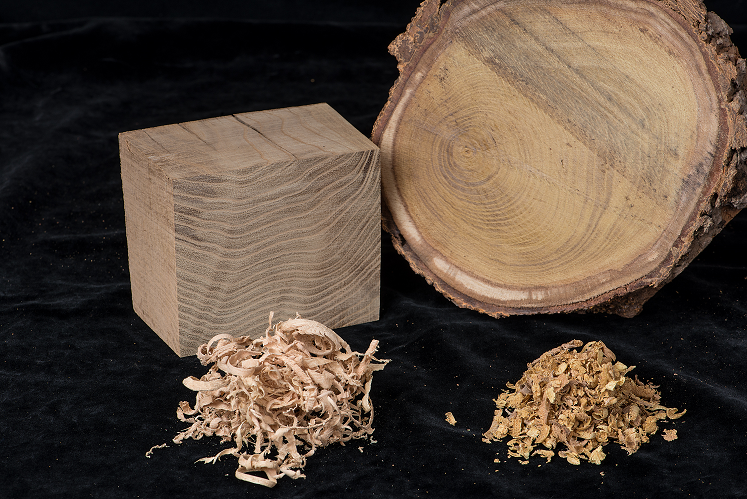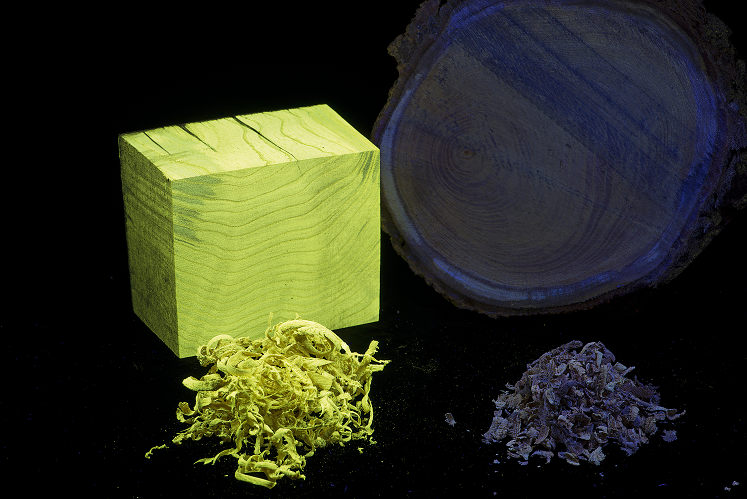Did You Know Wood Can Glow?
15 October 2020Some types of wood glow under UV light.
This phenomenon can help identify and distinguish between timber from different tree species. For example, the wood of black locust and mulberry appear very similar to the naked eye (photo on the left below). When exposed to UV light, the black locust wood appears fluorescent green, while the mulberry wood does not (photo on the right hand side below). In some tree species, the wood itself may not glow under UV light but mixing their sawdust or wood shavings with water or denatured alcohol releases compounds that do react to UV light. This relatively simple method can be part of a tool kit used to identify timber of endangered tree species, and help combat illegal logging and exports.
This article has been published in the Autumn 2020 edition of the Farm Woodland News. Download a copy to access all articles. Subscribe to receive newly published editions via email by using the form here.
Sign up to the FAS newsletter
Receive updates on news, events and publications from Scotland’s Farm Advisory Service


